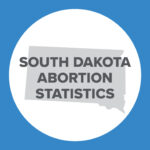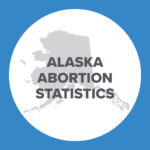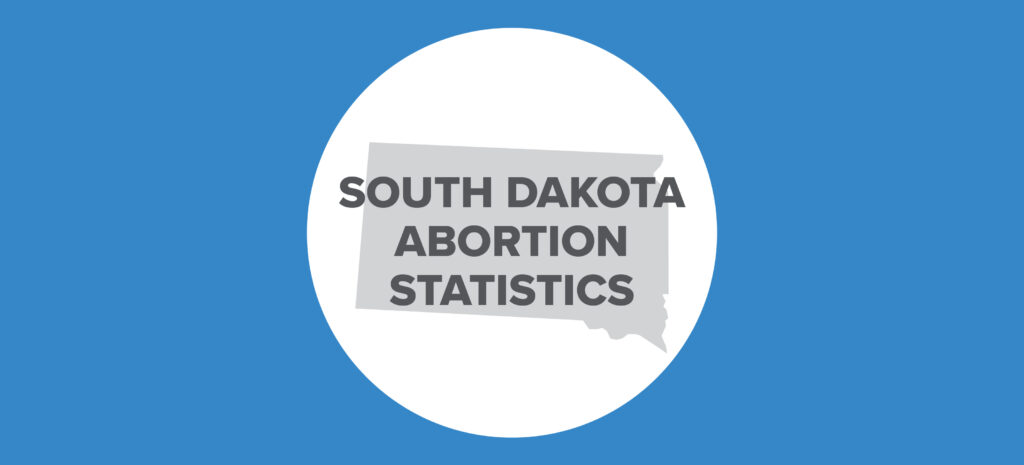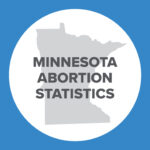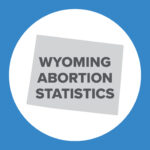Abortion Reporting: Nebraska (2021)
Nebraska’s 2021 abortion report was published in May 2022, and a corrected version of the report was re-released in October 2022. Abortions in Nebraska decreased from 2020.
Statistics and Changes in Nebraska Abortions, 2020-2021

The report does not include information on Planned Parenthood’s Nebraska abortion market share.
Abortion Totals and Trends
In 2021, there were 2,360 abortions reported in Nebraska. This was a decrease of one percent from the 2,378 reported the previous year (Fig. 1). Chemical abortions jumped by two percent from 1,683 in 2020 to 1,709 in 2021, making up 72 percent of all abortions in the state. Nebraska’s abortion rate decreased by less than one percent to 6.2 abortions per 1,000 women of childbearing age, according to Charlotte Lozier Institute (CLI) estimates (Fig. 2). As of November 2022, 24 states have released 2021 abortion statistics and 17 states reported that abortions increased from 2020.
State Report Summary
In 2021, 88 percent of the abortions reported in Nebraska were performed on state residents, while 12 percent were performed on women from other states, a lower percentage than the previous year. Ten percent of Nebraska abortions were performed on girls younger than 20. Fifty-nine percent of the abortions were obtained by women in their twenties (31 percent on women ages 20 to 24, and 28 percent on women ages 25 to 29). Twenty-eight percent of Nebraska abortions were performed on women in their thirties, and three percent were on women ages 40 and older.
Multiple races can be reported for each woman obtaining abortion in Nebraska. In 2021, 58 percent of the abortions were performed on white women, and 21 percent were on black women. Three percent were on Native American women, and five percent were on Asian women. Six percent of the abortions were performed on women of other races. Race was not reported for seven percent of the abortions. CLI estimates that the black abortion rate of 22.4 abortions per 1,000 women ages 15 to 44 was five times higher than the white abortion rate of 4.2.
Two percent of Nebraska abortions were performed on women with less than a high school education, a decrease of 73 percent from 2020. Forty-seven percent were on women who reported that high school was their highest completed level of education, and 25 percent were on women who had attended some college. Thirteen percent were obtained by both women with a college degree and women whose educational status was unknown, in contrast with 2020 when educational status was not reported for six percent of the abortions.
Sixty-eight percent of the abortions were performed on women who had been pregnant before. Thirty percent of the abortions were on women who previously had an abortion, with 21 percent performed on women with one prior abortion and nine percent on women with more than one. Forty percent of women who obtained abortions in Nebraska had zero previous live births while 21 percent had one previous live birth. Forty percent had two or more previous live births and there were seven women whose number of previous live births were unknown. Eighty-four percent of the abortions were performed on unmarried women, and 13 percent were on married or separated women. Marital status was not reported for two percent.
Four dilation and evacuation (dismemberment) abortions and 78 dilation and extraction abortions (the procedure used in partial-birth abortion) occurred in 2021. Nebraska law prohibits performing dismemberment or partial-birth abortions on living unborn babies, although the procedures may be used after the babies have been killed. The majority of abortions reported in Nebraska (72 percent) were chemical. Twenty-four percent of the abortions were conducted via suction curettage. Two sharp curettage abortions were performed, and three additional abortions were performed using another, unspecified abortion procedure.
Nebraska limits abortion at 20 weeks post-fertilization (approximately 22 weeks of gestation). Thirty-six percent of Nebraska abortions were performed at six weeks gestation or earlier. Thirty-one percent were performed between seven and eight weeks, and 16 percent occurred between nine and 10 weeks of gestation. Seven percent each were performed between 11 and 12 weeks and 13 and 15 weeks of gestation. Three percent were reported between 16 and 19 weeks. There were five abortions at 20 weeks of gestation and 10 abortions at 21 weeks.
The 2021 Nebraska report states that five doctors performed abortions in the state in 2021. Three doctors performed 15 abortions among them, one doctor performed 929 abortions, and one doctor performed 1,416 abortions.
2021 Nebraska abortions occurred in three counties, Douglas County where one of the state’s two Planned Parenthoods is located, Lancaster County where the other Planned Parenthood is located, and Sarpy County where an abortion center owned by late-term abortion provider Leroy Carhart is located. Thirty-six percent of Nebraska abortions occurred in Douglas County, 24 percent occurred in Lancaster County, and 39 percent occurred in Sarpy County. The report does not indicate whether all abortions were performed in abortion centers or if some occurred in hospitals or doctor’s offices.
Women undergoing abortion in Nebraska are asked to share their reasons for seeking abortion, and each woman may provide multiple reasons. In 2021, 34 percent of the women declined to give a reason. Sixteen percent of all women getting abortions were seeking an abortion due to contraceptive failure, and 41 percent did not use contraception. Four percent of all abortions were performed for socioeconomic reasons and five percent were performed due to the woman’s mental health. Three percent (65 abortions) were performed because of the mother’s physical health. There were 19 abortions because the unborn baby was deemed to have an anomaly (less than one percent), 16 to protect the woman’s life (0.7 percent) and another 16 due to sexual assault. Five abortions occurred because of an emergency.
Fifty-six percent of the unborn babies killed by abortion were less than 60 millimeters long (approximately 2.4 inches), while three percent were 60 millimeters or longer. Forty-two percent of the unborn babies could not be measured. Fifteen percent of the babies weighed less than 100 grams, and four percent weighed 100 grams or more. Eighty-one percent could not be weighed.
In 2021, parental consent for abortion was obtained for 79 minors and not obtained for three minors. An exception to the parental consent requirement was made in six cases. Unlike previous reports, Nebraska’s 2021 report does not break down abortions by individual year of age; consequently, the number of abortions performed in 2021 on girls under the age of 18 cannot be determined from the report. There were five cases in which Nebraska’s informed consent requirements were waived due to an emergency situation. There were two unspecified abortion-related complications reported in 2021.1
Counties of Residence
Nebraska reports each county from which five or more residents obtained abortions. In 2021, there were 35 counties which had least five resident women who had abortions in Nebraska. Twenty-five of those counties were in Nebraska, five were in Iowa, four were in South Dakota, and one was in Missouri. Most of the counties were in the Eastern part of Nebraska, where the state’s three abortion centers are located. Ninety-three percent of Nebraska abortions were performed on residents of these 35 counties. Another seven percent of the abortions were performed on women from other counties, including counties in other states.
State Ranking
In CLI’s 2016 evaluation of abortion reporting across the country, Nebraska reporting was ranked ninth best. As CLI has previously recommended, Nebraska could improve its abortion complication data collection and reporting. Nebraska could return to reporting the age of women and girls per individual age, instead of grouping together all minor ages. Lastly, Nebraska could cross-tabulate its data so that the types of procedures are tabulated alongside the week of gestation at which they were performed.
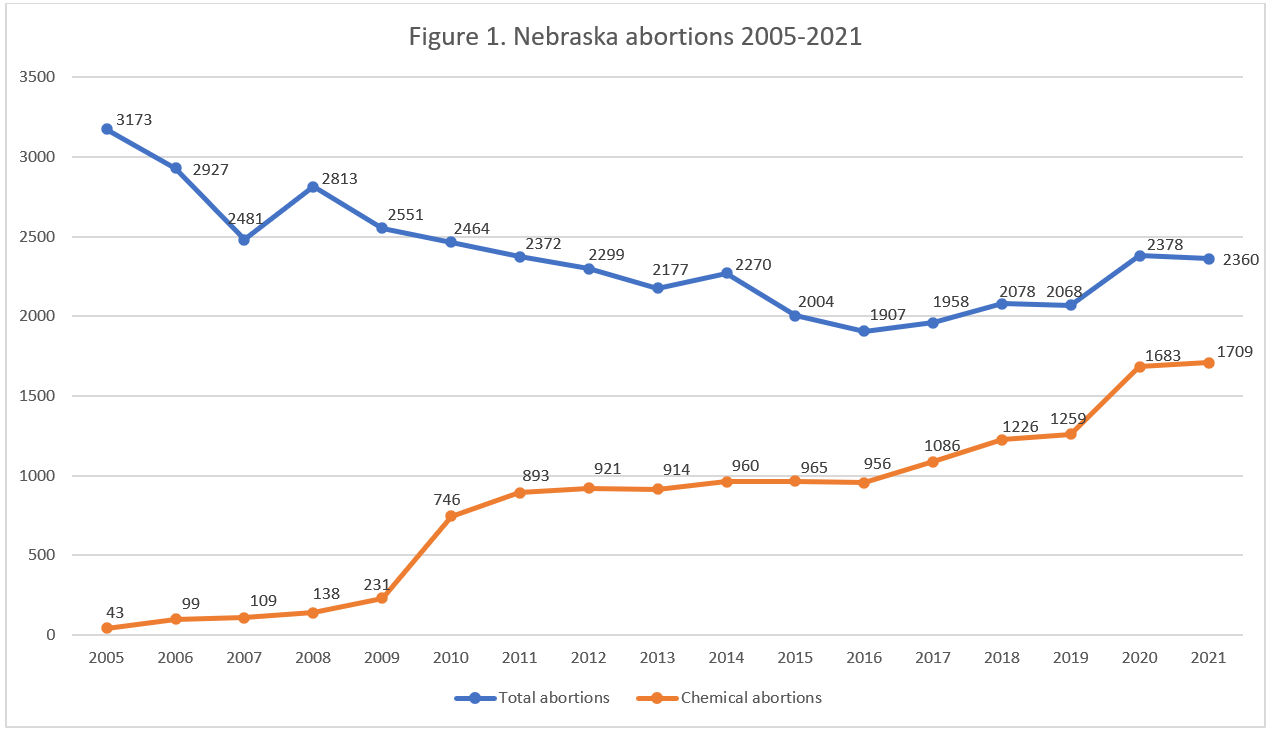
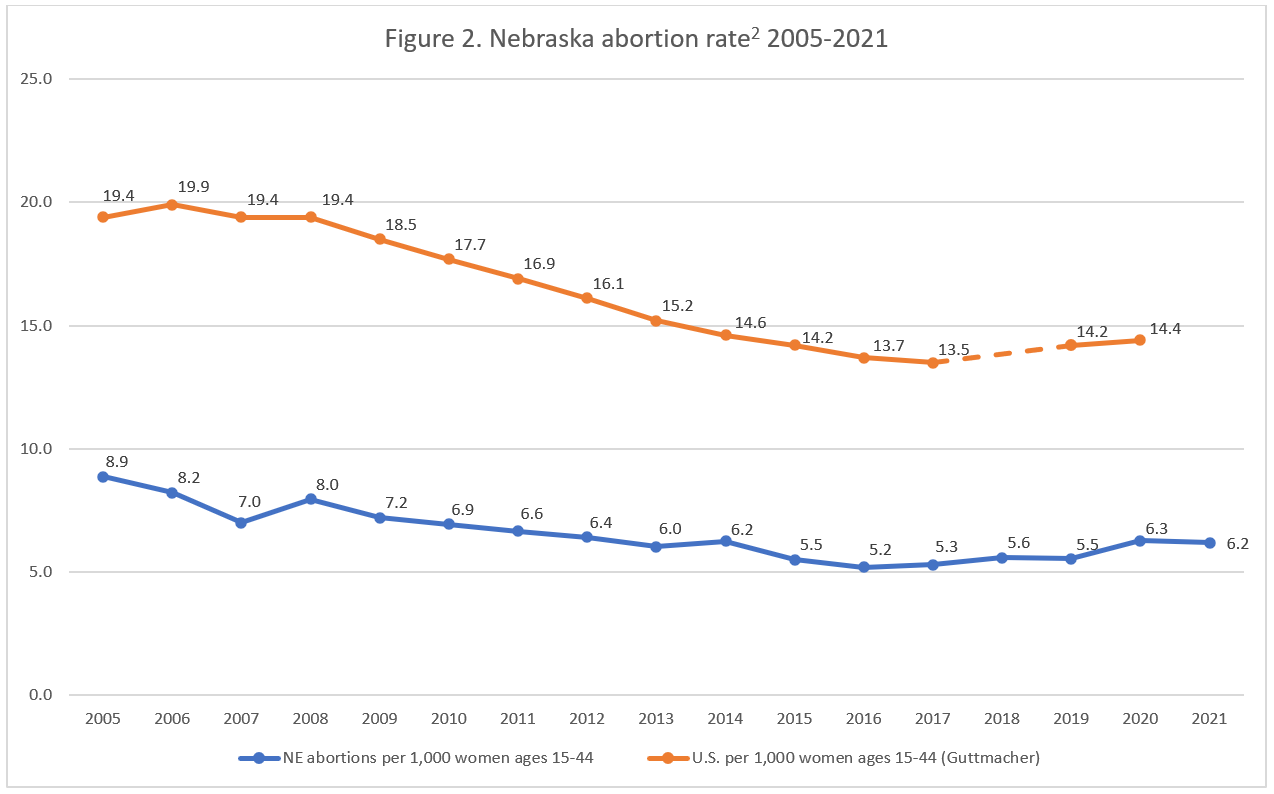
- Statistics on abortion complications reported here represent a minimal number of deaths and complications as this data is collected in a non-systematic and non-verifiable way. As such, this data cannot be used to calculate either an accurate abortion mortality rate or an accurate abortion complication rate for the state.
- Rates were calculated by CLI using the following formula: (total number of abortions performed in Nebraska ÷ number of resident women ages 15 to 44) x 1,000. Rates may differ slightly from previous CLI articles due to revised population estimates. Population estimates were obtained from the CDC WONDER database. Estimates for 2005-2009 are intercensal estimates of the July 1 resident population. Estimates for 2010-2019 are Vintage 2020 postcensal estimates of the July 1 resident population. Estimates for 2020-2021 are Vintage 2021 postcensal estimates of the July 1 resident population. Estimates were produced by the U.S. Census Bureau and the National Center for Health Statistics.











